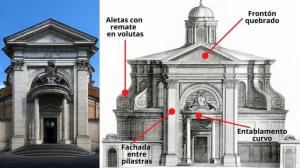Chichén Itzá: analysis and meanings of its buildings and works
Chichén Itzá, located on the Yucatán Peninsula in Mexico, was a fortified Mayan city. Its name translates as 'Mouth of the well of the Itza'. The Itza were, apparently, mythical-historical characters, whose name can be translated as 'water sorcerers'.
Chichén Itzá still houses the ruins of a glorious past that give account of its importance: the Castle, the Caracol observatory and the sacbé (roads), will be some of them. But they will also have markets, playgrounds, temples and government buildings that, together with the found bones and the natural formations of the cenotes, have a lot to tell us.
However, the questions remain: what made the Maya so architecturally and culturally valuable and why, despite this, did Chichén Itzá lose its power?
The snail

In the south of the city are the remains of a building called Caracol, because it has a spiral staircase inside.
It is believed that this work is an observatory to analyze and map the sky, due to several factors: First, it is located on several platforms that give it height above the vegetation, providing a view to the sky. open; second, its entire structure is aligned with the heavenly bodies.
In this sense, the main staircase points to the planet Venus. Since the building is in ruins, only about three windows survive. Two of them are aligned with the quadrants of Venus and one is with the astronomical south.
To top it off, the corners of the base are aligned with the solar phenomena: sunrise, sunset, and the equinox.
The observatory allowed the Mayans to predict and plan harvests, and it was also used to predict the most opportune moments for war, among other social aspects.
The causeways
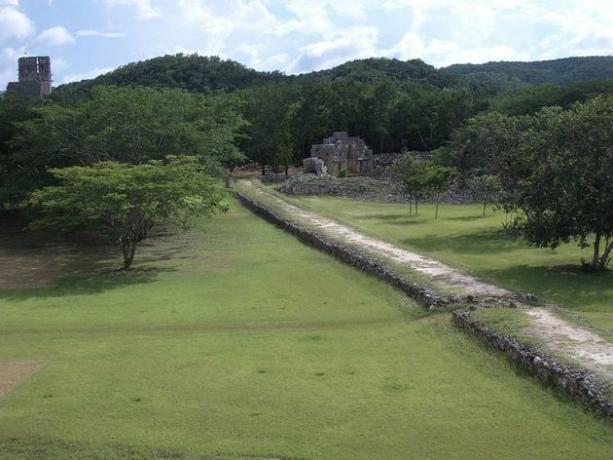
An extraordinary find by archaeologists has been the tracing of at least 90 Mayan causeways that connected Chichén Itzá with the surrounding world.
They received the name of sacbé, which comes from the Mayan words sac, what does 'white' mean and be, which means 'way'. The sacbé they allowed communications, but they also served to establish political boundaries.
Although they may not seem so at first glance, these roads were an architectural phenomenon. They were formed with large stones at the base with some old mortar. On these stones a layer of smaller stones was arranged to level the surface. These layers were bordered on each side by masonry walls that gave them containment. In the end, the surface was covered with a kind of white plaster made with limestone.
All the sacbéFrom one way to another, they led to the heart of Chichén Itzá, that is, to the castle in the shape of a pyramid.
Chichén Itzá Castle

In the heart of the city stands the Castle, a 30-meter monumental pyramid in honor of Kukultán, the serpent god of Mesoamerican cultures, equivalent to Quetzalcóatl. It is built entirely of limestone, an abundant material in the area.
Basically, the Castle works as a calendar for the city. It is thus composed of 18 terraces that correspond to the 18 months of the Mayan calendar. On each side of the pyramid, there is a staircase of 91 steps that, together with the platform, adds up to 365 days a year.
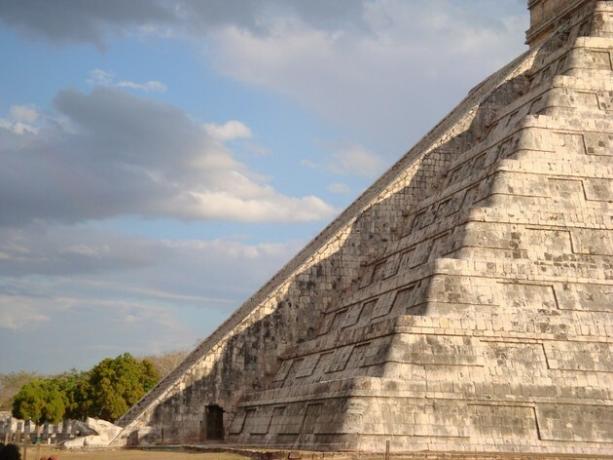
The stairs culminate at the base with a sculpture with the head of the serpent god. Twice a year, the equinox causes a shadow to be projected on the edges of the steps, which simulate the body of the serpent that is completed with the sculpture. The symbol is constructed in this way: the serpent God descends to earth. You can see how the effect of the descent of the snake is formed in the following video:
All of this is achieved through in-depth knowledge of astronomy, mathematical calculation and architectural projection. But the castle hides more than one secret.
Beneath that structure, a layer of rubble underlies, and, under this, in turn, there is a second pyramid, smaller than the previous one.
Inside the pyramid, a staircase leads to two interior chambers, within which you can see the sculpture of a throne shaped like a jaguar and jade teeth, as well as a statue of Chac mool.
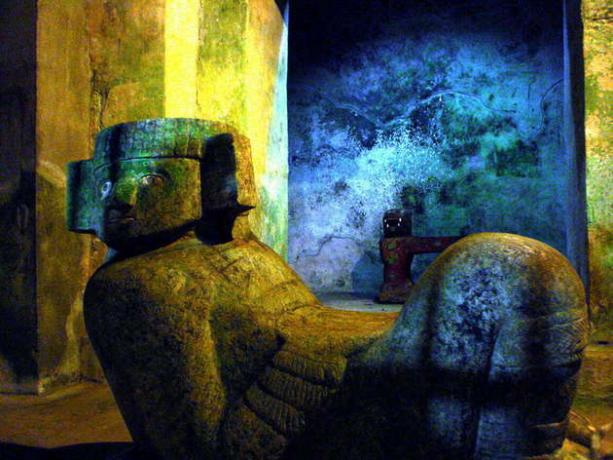
Another passageway reveals a crucial element in the interpretation of this culture: the discovery of a space in which human skeletons with signs of sacrificial offerings are found.
The archaeologists' research has also found an essential element in the construction of the castle: it is built on a deep well of water called a sacred cenote. This well is 60 meters in diameter and its walls reach 22 meters in height.
Although the Castle is located on a central cenote that hides with its heavy structure, it is also weakened by four exposed cenotes, which form a perfect quadrant. In other words, it is located equidistant from the center of four cenotes.
But what meanings do cenotes have and what is their importance?
Cenotes: beginning and end of Chichén Itzá

The cenotes are, in reality, underground lakes that are formed over the years thanks to the rainwater deposits that shape the topography. They are submerged about 20 meters below the ground.
During the migratory processes that mobilized the Mayan culture, the discovery of these cenotes was essential to establish civilized life, since there were no nearby rivers in the jungle.
These wells or lakes had enough water to supply many generations and, in addition, you could always rely on the rain. Thus, they became the source of the agricultural economy of the Mayans.
While the four cenotes function as a source of water that allowed the settlement and flourishing of culture, the sacred cenote or the central cenote represents for the Mayans the link with the beyond. This was the central symbol of the entire Mayan universe.
The curious fact is that in the sacred cenote there are vestiges of a totally submerged altar in water, in which you can see many offerings: bones, textiles, ceramics, precious metals, etc. But what meaning would all these elements have? How could the Mayans carry these offerings underwater? How important would they be to the city of Chichén Itzá?
Many theories have been developed over the years, but the most widespread assumes that these ceremonies were related to a season of extreme drought that hit Chichén Itzá. This drought could have lasted between five and fifty years, causing the water to drop to alarming levels.
Faced with the natural phenomenon, the Mayan authorities began to make sacrifices to ask the rain god to send water. However, the rain never came. The wells dried up and the population began to migrate looking for a place with water. Little by little, Chichén Itzá was emptied, until it was devoured by the jungle.
Other emblematic buildings of Chichén Itzá
Temple of the Warriors
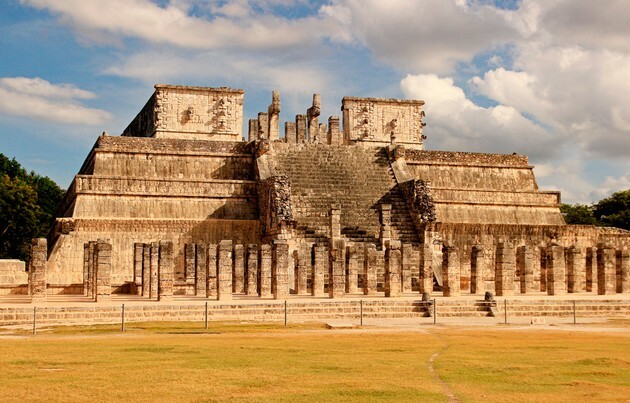
It is located in front of the large plaza of the complex. It has a square plan, four platforms with three projections and a staircase facing west. It has at the top with decorative figures called Atlanteans, which seem to hold a bench.
Inside is a former temple, which suggests that the Mayans took advantage of old structures to build larger ones. Inside this there are several statues of Chacmool. The temple is surrounded by different types of columns, which are known as the "courtyard of a thousand columns", which connects with other sites in the city.
Courtyard of a thousand columns

The columns arranged in this courtyard bear carved figures of the military and daily life of Chichén Itzá.
Pyramid or Temple of the Great Tables

It is located next to the Temple of the Warriors and was made with the same model. A few decades ago, a brightly colored polychrome mural with feathered serpents was found inside the temple.

Ossuary
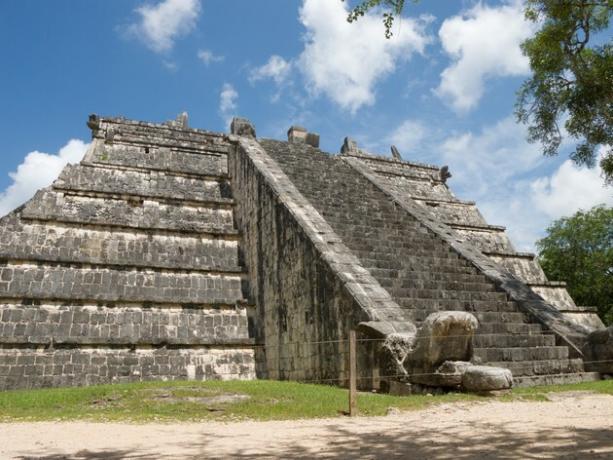
This building is a tomb that follows the same model of the Castle, but it is not known for sure which of the two buildings was the first. It has a height of nine meters. In the upper part it has a sanctuary with a gallery, it is decorated with different motifs, including feathered serpents, among others.
Nuns Square
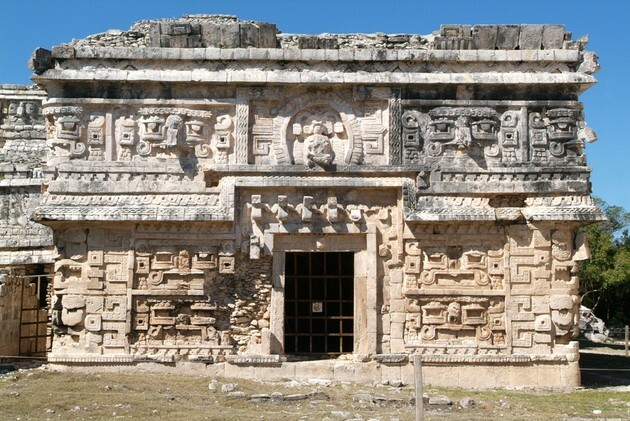
This building is named after the Spanish, who found a similarity between its structure and convents. Actually, it must have been a city government center. It has different ornaments and Chaak masks as decoration.
Great Ball Game

The Mayans had a ball game, which consisted of putting a ball in a hoop. There are several fields for this in the different Mayan settlements. Chichen Itzá also has its own.
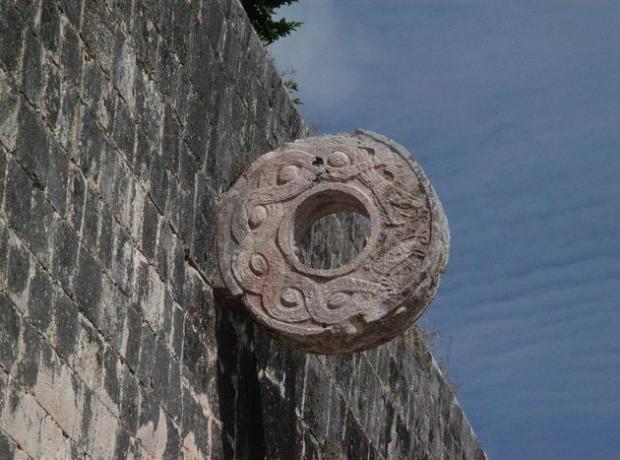
It is framed between 12 meter high walls. It has an area of 166 x 68 meters. Towards the middle of the field, at the top of the walls, are the hoops, made of stone. At the far end of this area is the North Temple, known as the Temple of the Bearded Man.
Temple of the Jaguars
It is a small temple located to the east of the platform of The Great Ball Game. Its rich decoration alludes to this game. In the decoration serpents are observed as the main element, as well as jaguars and shields.
Tzompantli

The Tzompantli o Wall of skulls it is probably an allegorical wall of human sacrifice, since it is believed that on its surface stakes were placed with the skulls of the sacrificial victims, which could be warriors enemies. Skulls are the main decorative motif, and their characteristic feature is the presence of eyes in their sockets. In addition, the eagle that devours a human heart also appears.
Platform of Venus

Within the city, two platforms are given this name and are very similar to each other. You can see the Kukulkan carving and symbols that allude to the planet Venus. Formerly, this building was painted ocher, green, black, red and blue. It is believed that it gave space for the celebration of rites, dances and different types of ceremonies.
Brief history of Chichén Itzá
The city of Chichén Itzá was founded around the year 525, but reached its peak between the years 800 and 1100, the late classic or post-classic period of pre-Columbian cultures.
With more than 30 buildings, its vestiges have become conclusive testimony of the scientific advances of this Mesoamerican culture, especially as it relates to astronomy, mathematics, acoustics, geometry and architecture.
In addition to its invaluable artistic value, Chichén Itzá was a center of political power and, as such, concentrated huge networks of commerce and great wealth.
In fact, the Mayans dominated trade in the area through the causeways that led to the Castillo, the heart of Chichén Itzá. In addition, they had ports not so close to Chichén Itzá, but from which they controlled various commercial points of the peninsula with their fleets.
They had to face different crises throughout their history, some of which implied changes in the order of domination and organization. Likewise, they were also influenced by the Toltec culture.
Some time after the city was abandoned, the Spanish found it in the 16th century. The first to find it were the conqueror Francisco de Montejo and the Franciscan Diego de Landa. They gave testimony of the wonders that they had found in that place.
In time, Chichén Itzá ended up being part of the private domains of its new occupants. Thus, by the 19th century, Chichén Itzá had become a hacienda that belonged to Juan Sosa.
In the first half of the 19th century, the estate was visited by the explorer and writer John Lloyd Stephens and the English artist Frederick Catherwood.
The hacienda was acquired at the end of the 19th century by the North American archaeologist and diplomat Edward Herbert Thompson, who dedicated himself to the study of Mayan culture. His heirs were left in charge of the estate after his death in 1935.
However, the National Institute of Anthropology and History of Mexico is in charge of the archaeological exploration and maintenance of the site.
Observe the impressive aerial view of the city of Chichén Itzá in this video:



